Evaluate Battery Performance and Safety with
JEIO TECH Battery Test Chamber
(Interbattery Europe in June 2024)
Greetings! At JEIO TECH Lab Companion! 🤗
In today's world, batteries are essential to our lives. They are used in a wide range of industries such as automotive, computing, telecommunications, and alternative energy markets, as well as extensively in mobile devices like smartphones and laptops. With increasing environmental awareness, there has been a rise in demand for electric vehicles as an alternative in energy supply. Lithium-ion secondary batteries used in electric vehicles require various evaluations in performance and safety testing compared to nickel-hydrogen batteries due to their ability to store high-density energy.
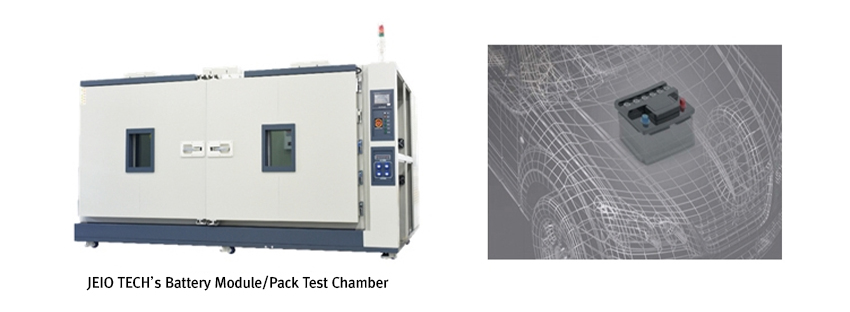
Battery Test Standards
There are various standards for evaluating battery performance and safety. International standards related to batteries include IEC, ISO, UN, UL (United States), and JIS (Japan). Let’s look at a few of them.
IEC Standards |
IEC 62133-2 |
Safety requirements for portable sealed secondary lithium cells, and for batteries made from them, for use in portable applications
- Part 2: Lithium systems |
IEC 62281 |
Safety of primary and secondary lithium cells and batteries during transport (compliant with UN 3480-38.3) |
IEC 62619 |
Safety requirements for secondary lithium cells and batteries for industrial applications |
IEC 62620 |
Secondary lithium cells and batteries for industrial applications. |
IEC 62660-1 |
Secondary lithium-ion cells for electric vehicles – Part 1: Performance testing |
IEC 62660-2 |
Secondary lithium-ion cells for electric vehicles – Part 2: Reliability and abuse testing |
IEC 62660-3 |
Secondary lithium-ion cells for electric vehicles – Part 3: Safety requirements |
ISO Standards |
ISO 12405-4 |
Test specifications for lithium-ion traction battery packs and systems for electric vehicles – Part 4: Performance testing |
UN Standards |
UN 3480-38.3 |
Criteria for the classification of lithium batteries as Class 9 dangerous goods for transport and for simulating safety tests under transport conditions |
Battery Assessment Methods
1. Performance Testing
Lithium-ion secondary batteries are primarily evaluated through performance and safety tests. Performance testing, out of them, is designed to confirm essential characteristics of lithium batteries and measure performance metrics such as battery capacity and output. Safety tests include temperature characteristics, constant current load characteristics, storage life characteristics, and cycle life tests, etc.
① Temperature Characteristics and Constant Current Load Characteristics Test
The temperature characteristics test is utilized to confirm the input and output capacity of the battery under various temperature conditions, including discharge and charge characteristics concerning temperature.
| Test |
Description |
Temperature Condition |
Standards |
Chamber |
Energy and Capacity |
Measurement of energy capacity based on temperature and discharge rate |
40℃ / 25℃ / 0℃
/ -10℃ / -18℃ |
ISO 12405-4
IEC 62660-1
IEC 62620 |
Temperature Chamber |
Power and Internal Resistance |
Measurement of power and resistance based on temperature and discharge rate |
40℃ / 25℃ / 0℃ /
-10℃ / -18℃ / -25℃ |
ISO 12405-4
IEC 62620 |
Temperature Chamber |
Cranking Power |
Measurement of cranking power at low and high temperatures |
Low: -18℃ / -25℃
High: 50℃ |
ISO 12405-4 |
Temperature Chamber |
Energy Efficiency |
Measurement of maximum discharge power during highway entry or overtaking under various temperatures |
40℃ / 25℃ / 0℃ |
ISO 12405-4 |
Temperature Chamber |
② Storage Life Test
This test measures the loss of battery charge state when the battery is stored for an extended period under given temperature conditions. Test batteries are stored in a constant temperature chamber, and remaining capacity and recovery rate are measured before and after storage.
| Test |
Description |
Temperature Condition |
Standards |
Chamber |
Cycle Life Test |
Evaluation until performance degradation through repetitive charge/discharge cycles |
-10°C charge / discharge cycle |
ISO 12405-4 |
Temperature Chamber |
45°C charge / discharge cycle, 28 days |
IEC 62660-1 |
Heating Chamber |
25°C charge / discharge cycle, 500 cycles |
IEC 62620 |
Temperature Chamber |
2. Safety Testing
Safety testing involves evaluating whether the battery can ensure safety during normal operation or in case of malfunction. This includes electrical, mechanical, and environmental tests. As battery charging involves chemical reactions and is influenced by temperature, charging the battery at higher temperatures than standards can lead to thermal runaway due to the safety degradation of the internal crystal structure of the battery. Therefore, the final requirement of safety testing is to "design the battery to prevent leakage, ignition, and explosion."
① Electrical Test
These tests evaluate electrical performance and safety, including continuous charging, internal and external short circuits, overcharging, and forced discharge tests. The continuous charging test simulates normal usage conditions, while the other tests fall under abuse tests.
| Test |
Description |
Requirements |
Standards |
Constant Voltage Charging |
Charge for 7 days under specified conditions |
NL, NF, NE |
IEC 62133-2 |
Overcharging |
Fully discharge at 25°C, then charge with 2.0 ltA constant current |
NF, NE |
IEC 62133-2 |
If the spec charge voltage is below 18V, charge with double current; above 18V, 1.2 times |
NF, NE |
IEC 62281 |
Continuously charge over 100% SOC at room temperature (25°C) |
|
IEC 62660-2 |
Forced Discharge |
Force discharge to (-) upper charge voltage for 90 minutes at 1ltA |
NL, NV, NC, NR, NF, NE |
IEC 62133-2 / IEC 62619 / IEC 62660-2 |
Force discharge by connecting to 12V DC power source at maximum continuous discharge current |
NF, NE |
IEC 62281 |
External Short Circuit |
Short circuit at (55±5)°C/(20±5)°C with external resistance of (80±20)mΩ |
NF, NE |
IEC 62133-2 |
Short circuit at (57±4)°C with external resistance of 0.1Ω for 6/12 hrs exposure |
NF, NE |
IEC 62281 |
Short circuit at room temperature with 5 mΩ external resistance for 10 minutes |
|
IEC 62660-2 |
Internal Short Circuit |
Short circuit by penetrating battery internally with nickel piece |
NF, NE |
IEC 62133-2 / IEC 62619 |
Force discharge by connecting to 12V DC power source at maximum continuous discharge current |
NF, NE |
IEC 62281 |
Thermal Runaway |
Heat single cell of the battery system using resistance heater until thermal runaway occurs |
NF, NE |
IEC 62619 |
*Note: Codes:
- NC: Not short-circuited,
- ND: Not deformed,
- NE: Not exploded,
- NF: Not ignited,
- NL: No leakage,
- NR: Not ruptured,
- NS: Not moved,
- NT: No excessive temperature rise,
- NV: No venting
② Mechanical Tests
These tests confirm safety when mechanical forces are applied externally to the battery, including vibration, impact, shock, crush, and drop tests. Vibration tests simulate normal usage conditions, while other tests examine abuse conditions.
| Test |
Description |
Requirements |
Standards |
Vibration |
Vibration 7Hz at 1G ↔ max. 200Hz at 8G in the X/Y/Z axis directions, repeated 12 times |
NL, NF, NE |
IEC 62133-2
/ IEC 62281 |
Max. 2000 Hz, 27.8m/s², 8 hrs per X/Y/Z axis |
|
IEC 62660-2 |
Impact |
Impact type: half-sine wave, max acceleration: 150gn, impact duration: 6ms, applied three times from three vertically installed positions (g=9.8 m/s²) |
NL, NF, NE |
IEC 62133-2
/ IEC 62281 |
Impact type: half-sine wave, max acceleration: 500 m/s², impact duration: 6ms, applied ten times in six directions |
|
IEC 62660-2 |
Shock |
Position a stainless steel bar (Ø15.8mm) crossing the center of the cell and drop a mass bar of 9.1kg from a height of 61cm at the intersection of the test sample. |
NF, NE |
IEC 62281
/ IEC 62619 |
Crush |
Apply a force of (13±0.78) kN between two flat surfaces on the cell at a speed of 1.5 cm/s |
NF, NE |
IEC 62281
/ IEC 62133-2 |
Use a circular Ø150mm (semicircular) compression fixture and compress cell with a force 1000 times the weight of the cell |
|
IEC 62660-2 |
Drop |
Drop the test sample from a height depending on its mass (e.g., less than 7kg/drop height 100cm, 100kg or more/drop height 2.5cm) |
NF, NE |
IEC 62281
/ IEC 62133-2
/ IEC 62619 |
③ Environmental Tests
These tests subject lithium batteries to varying temperature environments for a specified duration to confirm no cracking, leakage, or fire.
| Test |
Description |
Requirements |
Standards |
Testing Chamber (with safety option) |
Altitude |
Store at pressure below 11.6kPa for 6 hrs |
NF, NE |
IEC 62281 |
Vacuum Oven |
High-temp. deformation |
Keep a molded (injection, formed) case cell at (70±2)℃ for 7 hrs |
ND |
IEC 62133-2 |
Heating Chamber |
High temp. |
Reach (85±2)℃ at (5±2)℃/min, maintain for 3 hrs |
NF, NE |
IEC 62619 |
High-temp. durability |
Increase to 130℃ at 5℃/min, maintain for 30 mins |
|
IEC 62660-2 |
Temp. stress |
Hold at (20±5)℃ for 1 hr, then raise to (130±2)℃ at (5±2)℃/min, maintain for 30 mins |
NF, NE |
IEC 62133-2 |
ESS Chamber |
Thermal Cycle |
4 Cycles:
- Ramp up to (75±3)℃ within 30 mins and hold for 4 hrs.
- Ramp up to (20±3)℃ within 30 mins and hold for 2 hrs.
- Ramp up to (-20±3)℃ within 30 mins and hold for 4 hrs.
- Ramp up to (20±3)℃ within 30 mins and hold for 4 hrs. |
|
IEC 62133-1
(nickel cell) |
Temperature Chamber |
10 Cycles (Hold for 12hr for large cell) :
- Ramp up to 72℃ within 30 mins and hold for 6 hrs.
- Lower to -42℃ within 30 mins and hold for 6 hrs. |
NL, NV, NC, NR, NF, NE |
IEC 62281 |
ESS Chamber |
Cycle: 30 times, -40℃ ↔ 85℃ |
|
IEC 62660-2 |
Temperature Chamber |
JEIO TECH’s Battery Test Chamber
It is crucial to evaluate the performance of lithium-ion batteries through various tests described above and prevent any potential hazards beforehand. Furthermore, most safety tests aim to ensure that lithium batteries do not crack, leak, or catch fire, it is very important to select an appropriate environmental test chamber to ensure user safety and a safe testing environment.
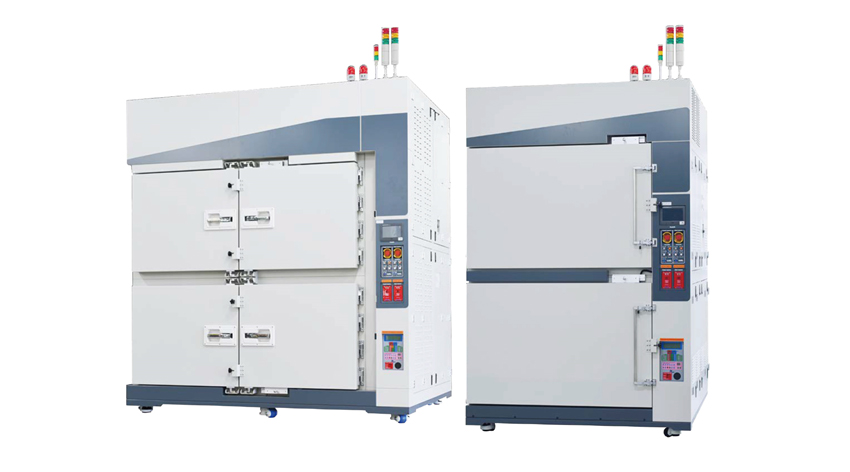
JEIO TECH’s battery test chambers can be used to perform various tests including temperature cycling tests, altitude tests, and heat resistance tests. They are equipped with separate safety devices to protect against ignition and explosion, which may occur during the testing processes.
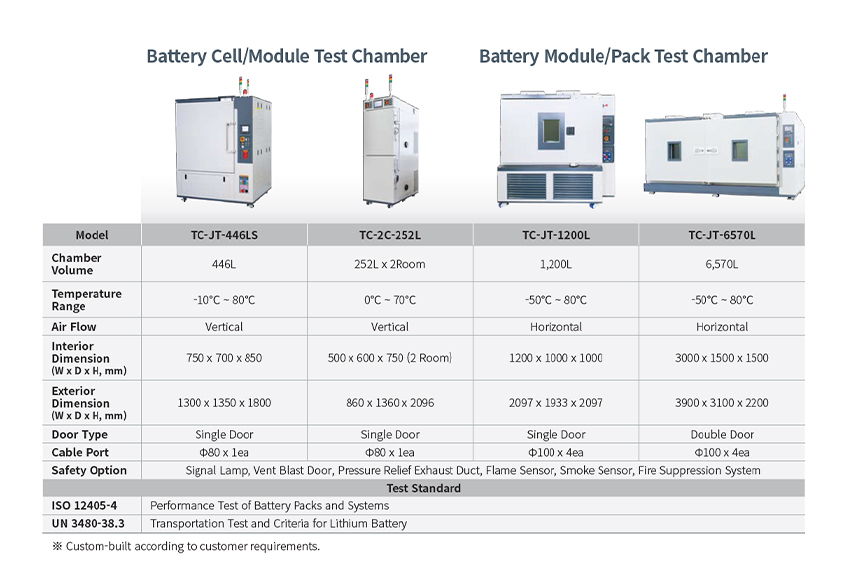
One common concern in environmental testing is the release of flammable gases in case of thermal runaway. Flammable gas release occurs very quick in an instant at high pressure, and lithium battery materials provide all elements required for a fire (heat from chemical reactions, flammable gas fuel, and oxygen produced by the battery itself). Therefore, extinguishing a fire caused by battery-generated oxygen is very challenging. Nitrogen gas(GN) purging and CO2 extinguishers can effectively prevent the spread of flames to other chamber components while they cannot prevent thermal runaway. Also, pressure relief vents can rapidly release gases emitted during battery failure to protect the chamber.
These are commonly used safety features, and for specific purpose, additional measures like fire and smoke detection and suppression systems, gas monitor(H2, O2, CO), door interlock switch(to prevent opening during testing or after an event), N2 or CO2 flushing systems to minimize fires, reinforced chamber floor to withstand high heat, and internal cooling system to control battery and pack temperatures are helpful. You can see the safety features of JEIO TECH’s battery test chamber in the figure below.
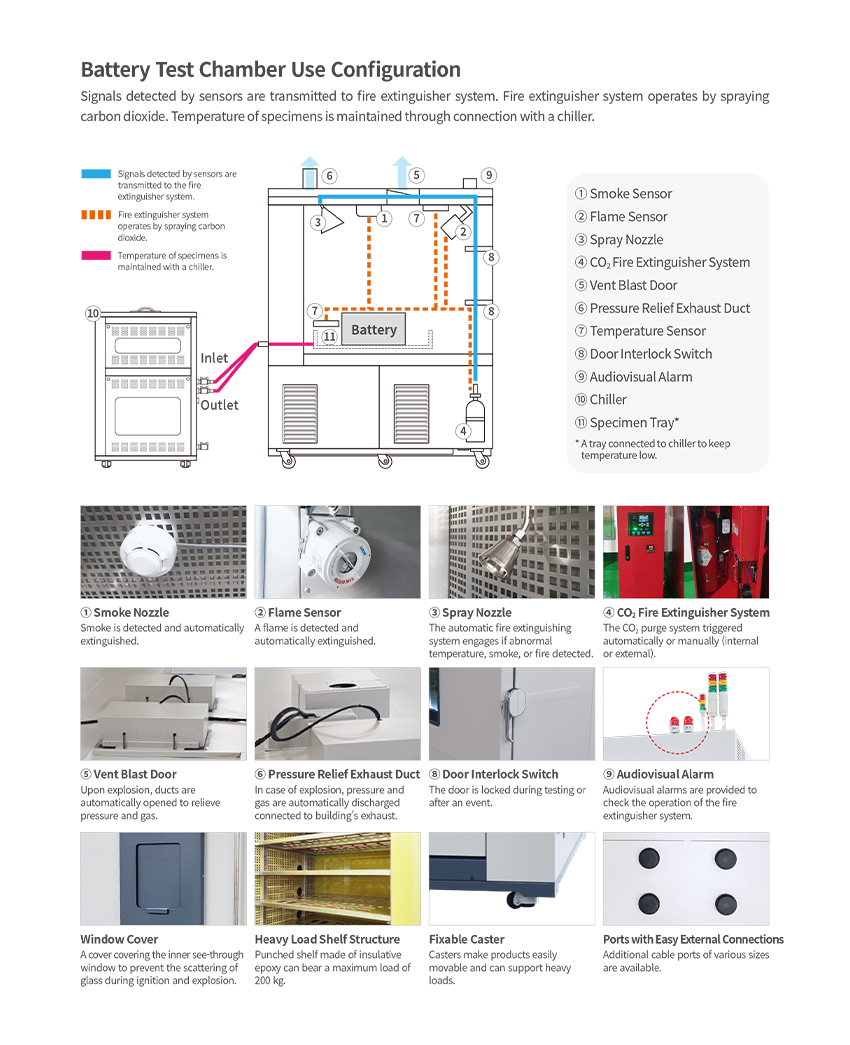
JEIO TECH is committed to researching and developing products equipped with the most comprehensive standards and optional safety equipment for safe and reliable battery testing. Let us know your requirements, we will offer the right solution based on the expected risk levels and potential risk occurrences according to the type of battery to be tested.
Download JEIO TECH's battery test chambers catalog below:
Download
* If you need any questions or assistance, please don't hesitate to reach out to us at:
SP Team: spsales@jeiotech.com
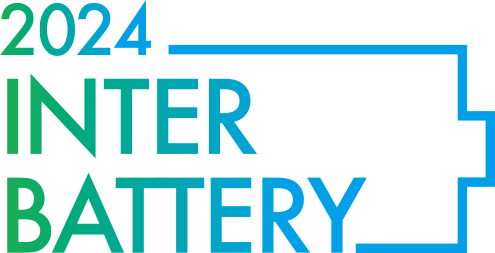
In June, you can see our battery chamber in person at Interbattery Europe, held in Messe Munich, Germany. "Interbattery" is Korea's largest battery exhibition, first launched in 2013, and has expanded since 2023 beyond Asia, presenting new and exciting opportunities in Germany, Europe—a crucial market for the industry, including planned battery cell production, module and pack assembly, equipment suppliers, and much more.
Just a couple of weeks ago, from March 6th to 8th, JEIO TECH successfully participated in Interbattery Korea and showcased our battery chamber, chiller (recirculated cooler) for battery testing, and up to battery storage cabinet.
Come and visit JEIO TECH in June 2024 at Interbattery Europe in Munich, Germany. See with your own eyes how our chambers look and what functions they have, and consult with our experts for more details.
Date: June 19th (Wednesday) – 21st (Friday)
Place: Messe Munich, Germany
Hall/Booth: To Be Announced (We will inform you shortly)
Find more about Interbattery Europe: Link
Thank you for reading today’s blog.
We will continue to strive to provide valuable information.
Your Lab Companion, JEIO TECH
We will continue to strive to enhance the quality of our products and services
by listening to and reflecting on the feedback of customers through sales, services, validation, etc.
JEIO TECH is creating safer research environments through Lab Companion,
the best partner of researchers and experimenters.



